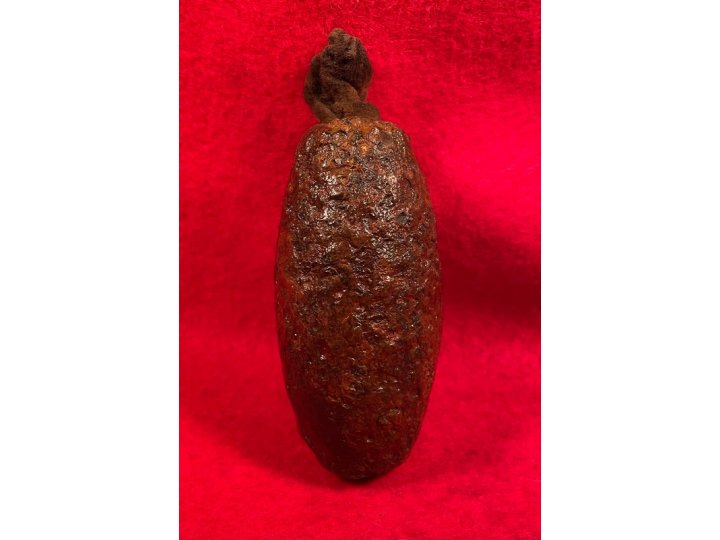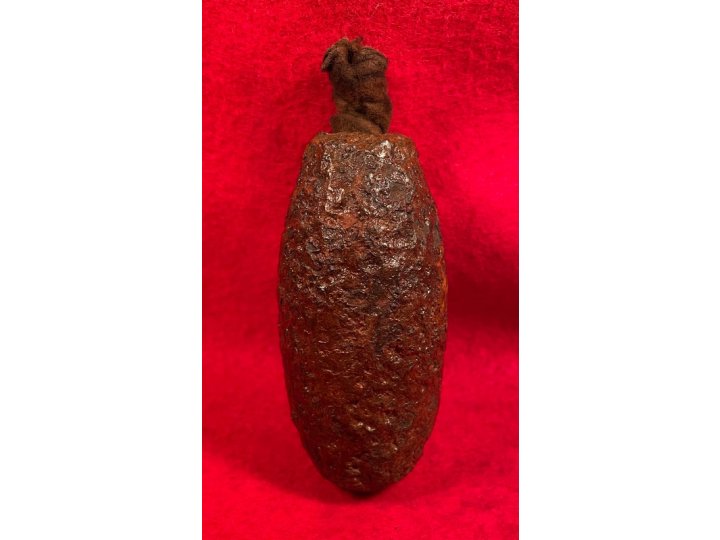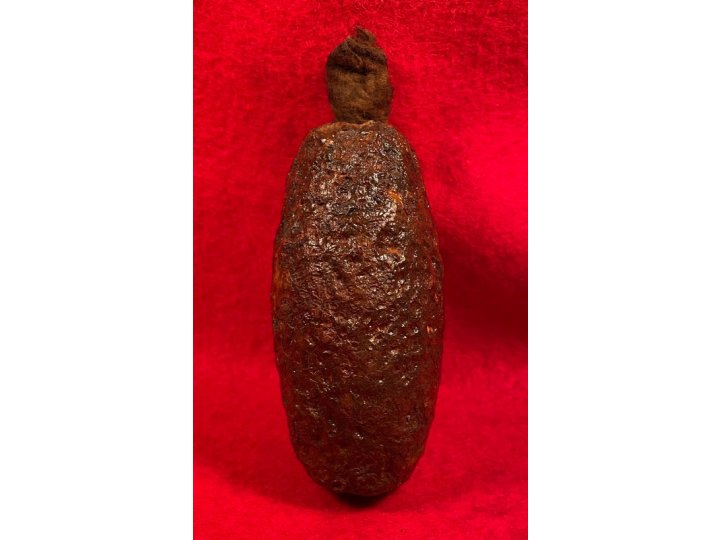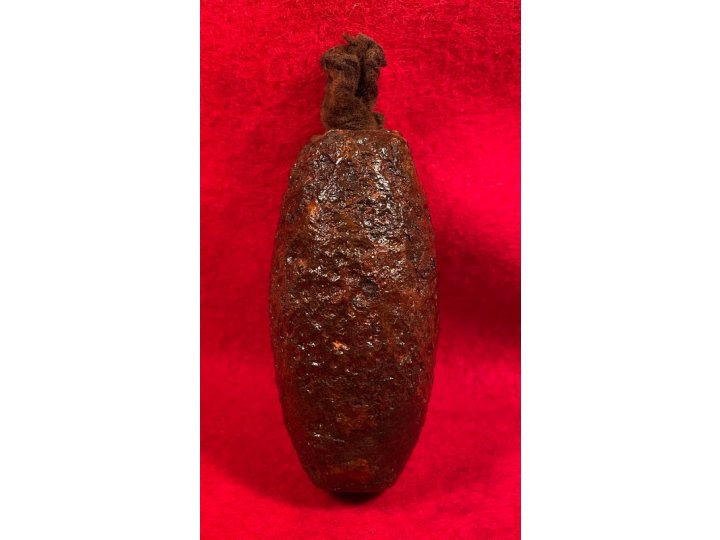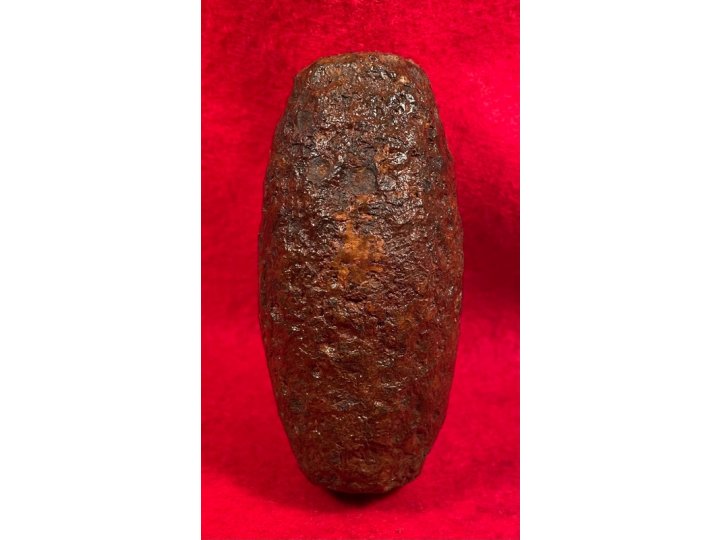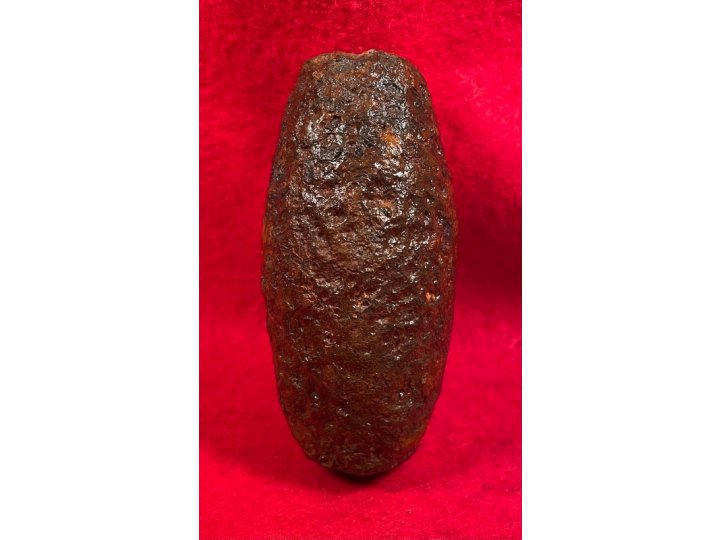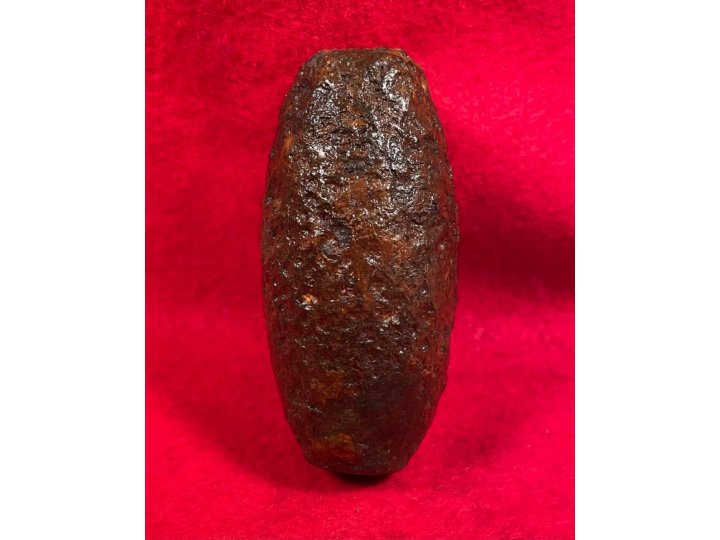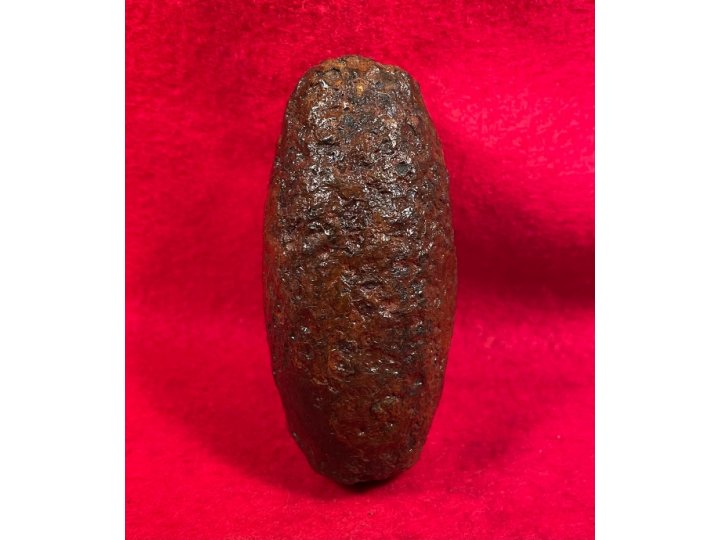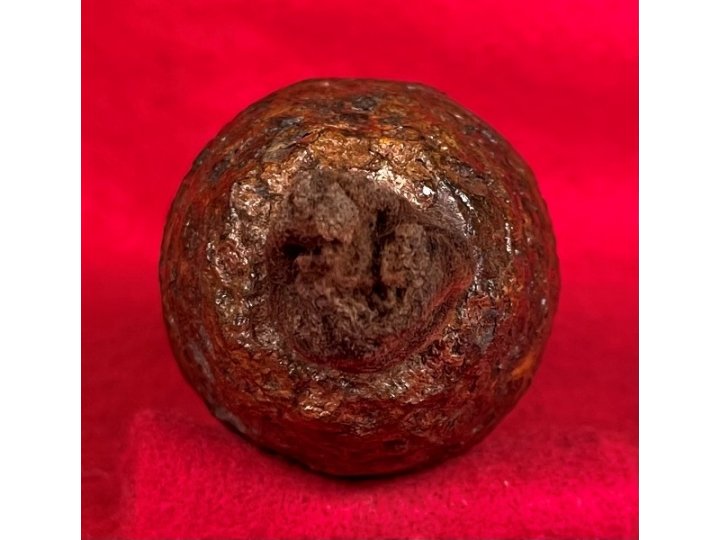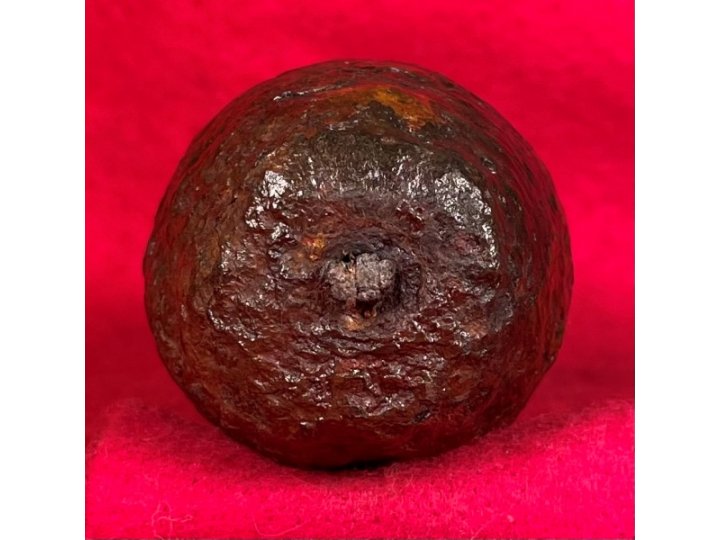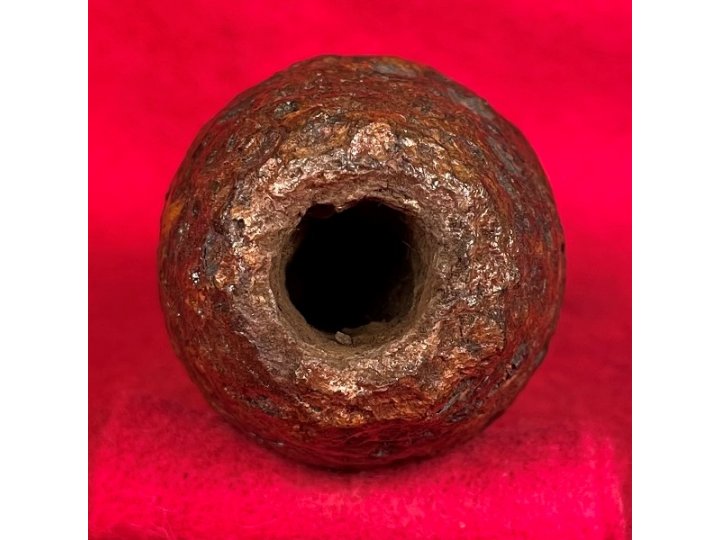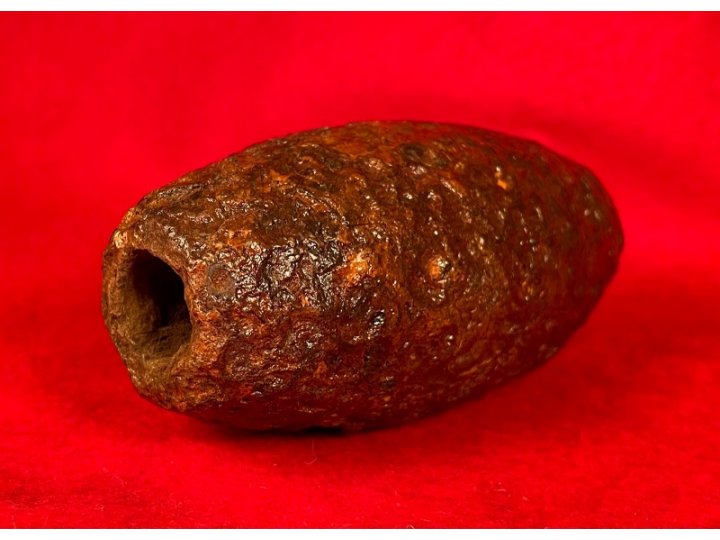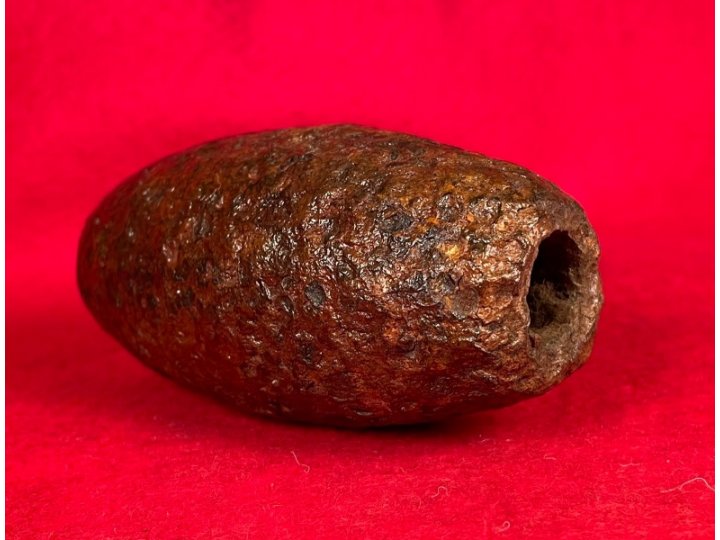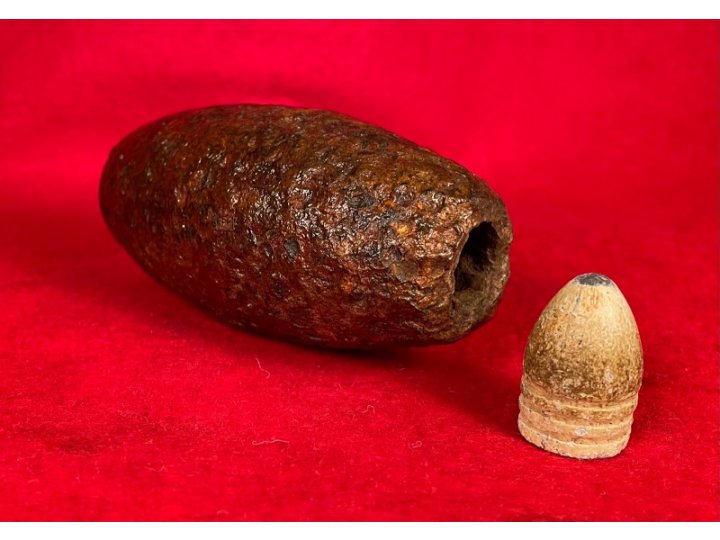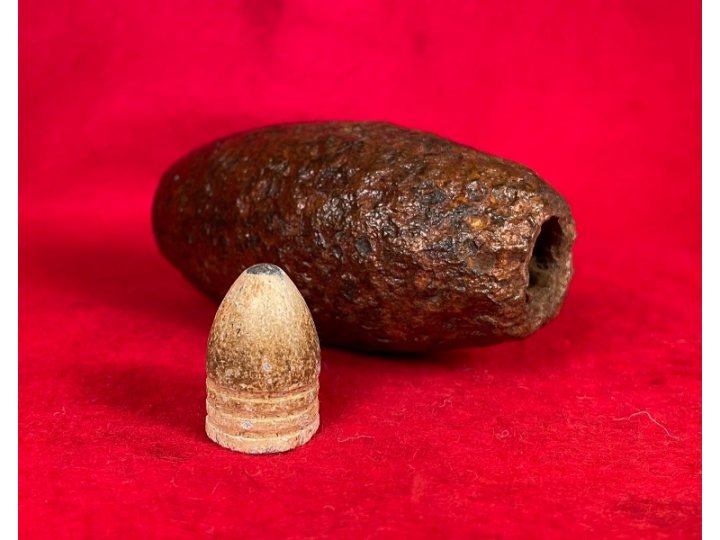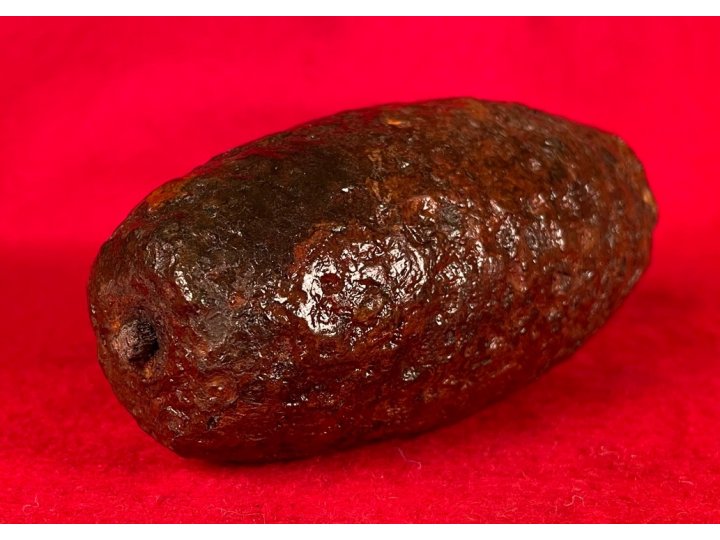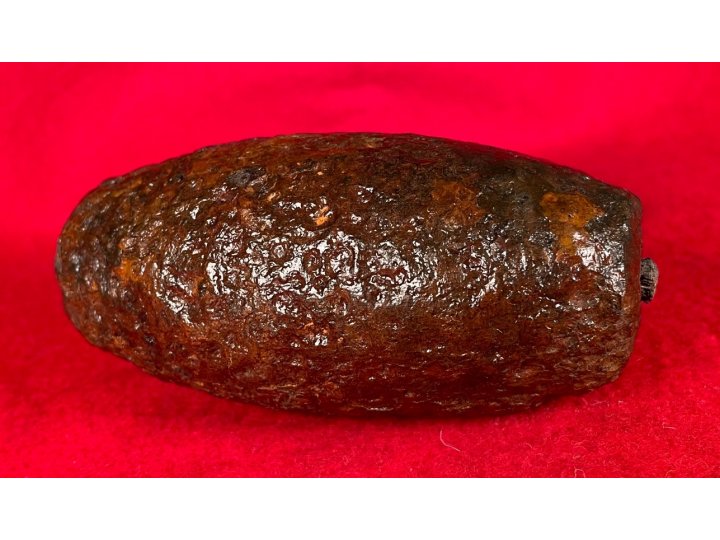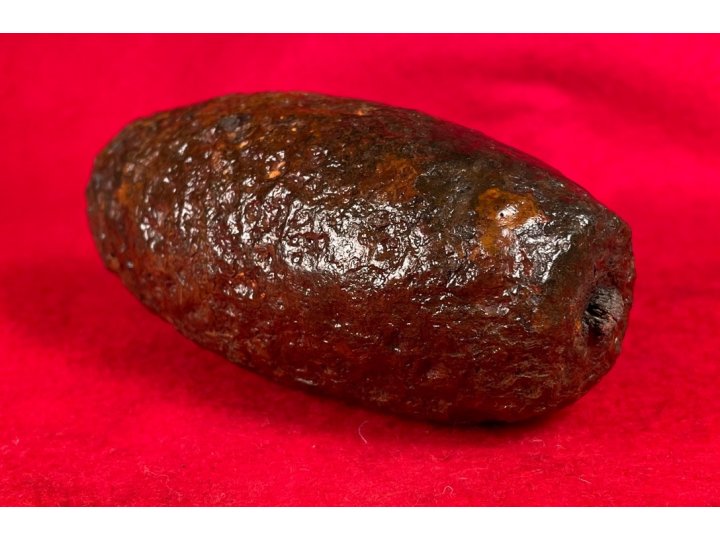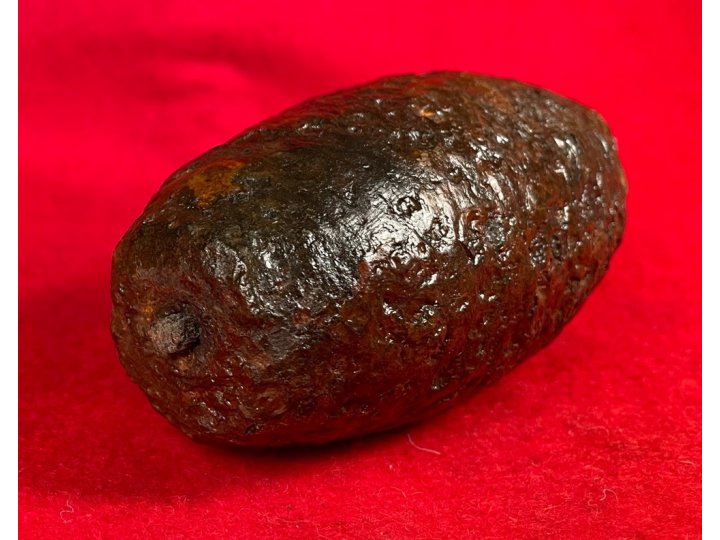- Home
- Virginia Relics
- Confederate Rains Hand Grenade - Rare
Confederate Rains Hand Grenade - Rare
SOLD
Item: Confederate Rains Hand Grenade - Rare
Fusing: Rains pressure sensitive. (no longer present)
Construction: Cast iron body.
Approximate size: Weight: 15 ounces. Diameter: 1.75 inches. Length: 3.53 inches
Condition: Very good, excavated. The iron body is stable, moderately pitted, and very lightly clear coated. Its fuze and cloth tail are missing. A bit of old cloth is used as a stopper at the cloth tail end. The grenade is inert.
Recovered: Unknown
Reference: Similar examples can be found in the following Civil War relic reference books:
- "Field Artillery Projectiles of the American Civil War", by Thomas S. Dickey & Peter C. George, page 499, Figure VIII - 7.
- "Civil War Artifacts of the Western Campaigns" by Charles S. Harris, page 249.
Scans of these pages are included in the additional images.
Comments: According to "Field Artillery Projectiles of the American Civil War", by Dickey & George, the Rains grenade was fitted with a three foot, six inch long cloth tail which was inserted in a slot in the rear wooden plug. While Federal Ketchum grenades are similar in body type, they employed a different fusing system. Peter George, co-author of the above mentioned artillery reference book, has evaluated this example and has determined that it is definitely a Rains grenade. He also advised that Rains grenades have been ground recovered from Petersburg and Drewry's Bluff, VA. Several others were recovered from water in Augusta, GA. This particular Confederate Rains hand grenade was ground recovered, not a water find. The grenade was designed by Gabriel James Rains and patterned after the Federal Ketchum grenade. Both Rains and his brother, George Washington Rains, worked in the Confederate Ordnance Department. While George established the Augusta Powder works and supplied the Confederacy with gunpowder, Gabriel worked on ways to use the powder such as developing both land and water mines. Also developed were detonation methods which varied from pressure-sensitive fuses to tripwires or lanyards. His grenade was detonated by use of a plunger and through use of his own pressure sensitive fuze. As indicated by his drawings, the flight of the grenade would be stabilized by the use of fins at the tail along with the use of a long cloth tail. Read more about the Rains grenade by clicking here. The example offered in this listing will be an excellent addition to any excavated Civil War artillery or general relic collection.
- Product Code:
- PC8565
MISSED OUT ON THIS ITEM?
I may have other similar examples not yet listed.
To find out:
Call or Text: 804-873-5462
Email: virginiarelics@comcast.net
- NEW ITEMS
- GREAT GIFT IDEAS
- ALL PLATES
- ARTILLERY
- BAYONETS
- BOOKS
- BUCKLES
- BULK BULLETS
- BULLETS
- BULLET GROUPS
- CAMPSITE ARTWORK
- CANTEENS
- CARTRIDGES
- CARTRIDGE BOX PLATES
- CAVALRY
- CIVILIAN RELICS
- CONFEDERATE BUTTONS
- CONFEDERATE RELICS
- CURRENCY
- EAGLE PLATES
- EDGED WEAPONS
- FEDERAL BUTTONS
- FEDERAL RELICS
- FIREARMS
- HORSE EQUIPMENT
- INFANTRY
- INSIGNIA
- JUST OLD STUFF
- MAKER MARKED PLATES
- MARKED RELICS
- MISC. BUTTONS
- MISC. EXCAVATED ITEMS
- MISC. NON-EXCAVATED ITEMS
- MUSICAL RELICS
-
NORTH SOUTH TRADER MAGAZINES
- Volume I
- Volume II
- Volume III
- Volume IV
- Volume V
- Volume VI
- Volume VII
- Volume VIII
- Volume IX
- Volume X
- Volume XI
- Volume XII
- Volume XIII
- Volume XIV
- Volume XV
- Volume XVI
- Volume XVII
- Volume XVIII
- Volume XIX
- Volume XX
- Volume XXI
- Volume XXII
- Volume XXIII
- Volume XXIV
- Volume XXV
- Volume XXVI
- Volume XXVII
- Volume XXVIII (28)
- Volume XXIX (29)
- Volume XXX (30)
- Volume XXXI (31)
- Volume XXXII (32)
- Volume XXXIII (33)
- Volume XXXIV (34)
- Volume XXXV (35)
- Volume XXXVI (36)
- PACKAGED BULLETS
- PAPER ITEMS
- POST-CIVIL WAR & BEYOND ITEMS
- PRE-CIVIL WAR BUTTONS
- RELIC DISPLAYS
- SWORDS
- UNIFORMS
- VETERAN ITEMS
- WATER RECOVERIES
